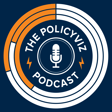
Akkio CEO Jonathon Reilly on Data and AI
Jonathon Reilly is an innovative and results-driven executive with over 20 years of experience in product management, business development, and operations. As the Co-Founder and COO of Akkio, he has helped create an easy-to-use AI platform that empowers users to build and deploy AI solutions to data problems in minutes.
Prior to founding Akkio, Jonathon served as the VP of Product & Marketing at Markforged, where he played a critical role in the company's growth and success. With a strong background in the tech industry, Jonathon held various leadership positions at Sonos, Inc., including Leader of the Music Player Product Management Team, Global Channel Development, and Senior Product Manager. He began his career at Sony Electronics, where he contributed significantly to the development of a wide range of consumer products as a product manager and electrical engineer.
Jonathon holds an MBA in Entrepreneurship/Entrepreneurial Studies from Babson College - Franklin W. Olin Graduate School of Business and a BSEE in Electrical Engineering from Gonzaga University.
See links, notes, transcript more at the PolicyViz website.
Episode Notes
Jonathon | Medium | Twitter
How to Lie with Statistics by Darrell Huff and Irving Geis
Data at Urban: How We Used Machine Learning to Predict Neighborhood Change

